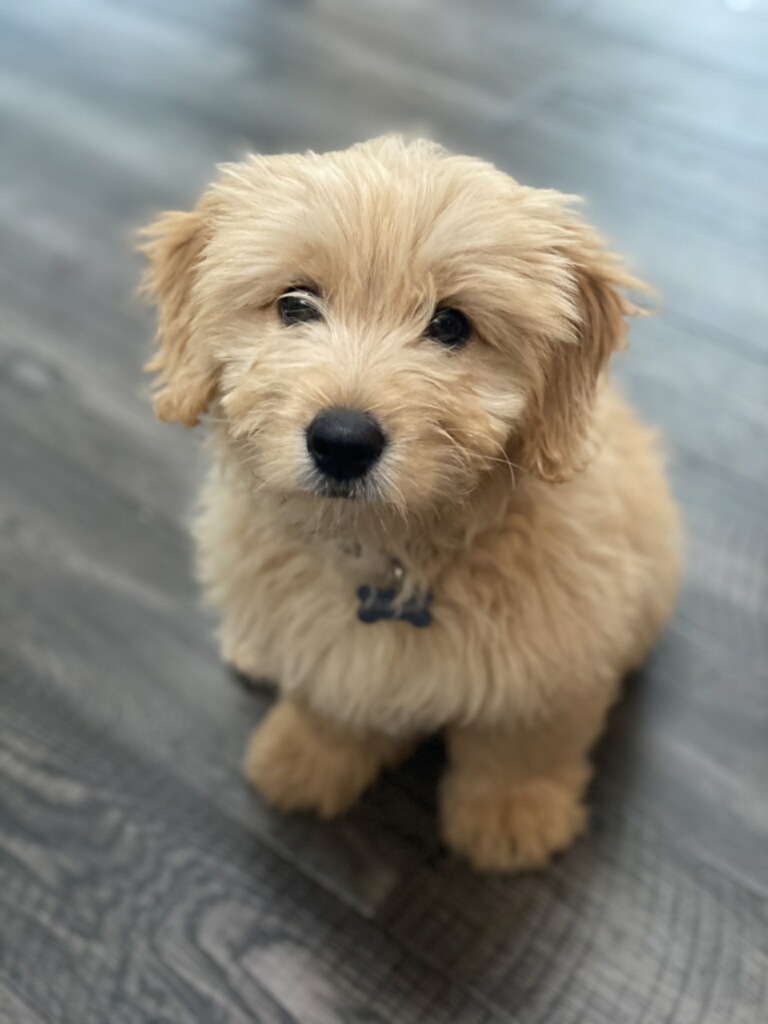The canine Goldendoodle breed (mixture of a Golden Retriever and Poodle) has been heralded as both a unique super-breed and a monstrosity of the canine world. It seems neither of these is true, but some breeders and owners still propagate these beliefs and often misconstrue genetic principles of breeding. Because Goldendoodles are such a popular hybrid, sometimes these incorrect assertions are used to support objectives such as puppy sales of either Goldendoodles or purebreds only.
What is true is that puppies are a combination of the genetic make-up of their parents. Some people claim that the first generation of a Goldendoodle, a puppy from a Golden Retriever and a Poodle parent (called an F1 hybrid), has hybrid vigor. However, it is typically incorrectly used to argue that these F1 hybrid Goldendoodles are less susceptible to the diseases of their parents. Several studies including those by Charlesworth evaluated the complicated genetic function of inbreeding which can cause “loss of vigor” and inbreeding depressions, and the inter-breed hybrid vigor. This analysis shows hybrid vigor is a real and should be considered by breeders who are breeding for specific traits in specific canine lines like Golden Retrievers. Inter-breeding may counteract conditions such as hip dysplasia and ichthyosis that can be reinforced within a breed when selecting a specific trait.
However, when considering the first generation of a crossbreed like a Goldendoodle, hybrid vigor simply means that the puppies are less likely to have the same genetic combinations that would cause loss of vigor in the purebred they are from. It does not mean that these first-generation hybrids are less likely to have the inherited conditions that are already in the genetic make-up the parents, which is the myth often touted by breeders of Goldendoodles. This myth is used to justify breeding dogs with bad hips, bad eyes, skin conditions, and other genetic problems of the purebred parents, by making the assuming the offspring cannot have these conditions. This is blatantly false; the complex genetic make-up of both parents will influence the traits of the offspring including characteristic such as hip dysplasia.
Likewise, there are breeders of purebreds that argue that breeding two different types of purebreds will create puppies with gross deformities and health problems. These views are generally from a personal belief that the breed they represent is optimum and should not be modified. However, this is equivalent to being a racist, to suggest that mixtures of two different canines should be avoided is like saying humans of different ethnicities should not produce children. The offspring of two dogs are still dogs, with a mixture of the characteristics of the parents based on genetics and is precisely how purebreds were started in the first place.
So, when hybrid vigor is used to tout the health benefits of Goldendoodles, it is important to understand that the puppies are simply a combination of the parents. Traits like weight, coat color, and hip dysplasia can be inherited almost entirely from either parent but are generally a combination of the two. Unlike purebreds, the genetic variations can be much greater in the first-generation hybrid between two breeds as evaluated by Servant Kennel, a breeder of both Golden Retrievers and Goldendoodles in Michigan. Therefore, it is important that breeders of Goldendoodles use parents that do not have known genetic concerns since the puppies can inherit the traits of either parent. Simply stated, hybrid vigor does not compensate for poor genetics of the parents.
Media Contact
Company Name: Servant Kennel
Contact Person: Arthur
Email: Send Email
Country: United States
Website: http://servantkennel.com/
